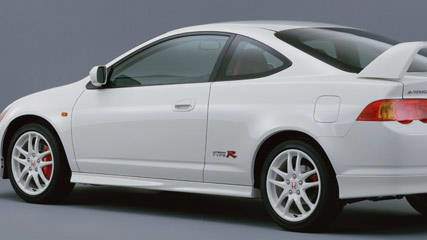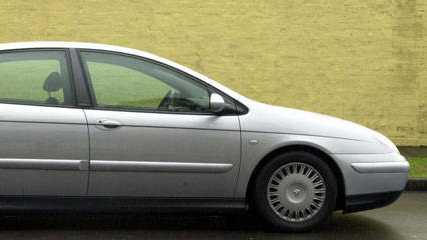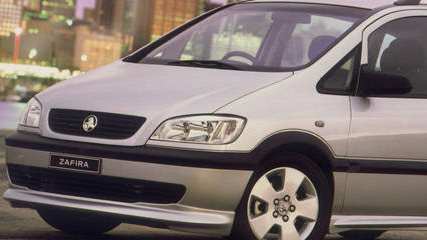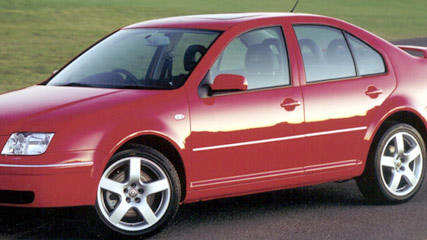Holden Monaro 2002 Review
By Paul Gover · 14 Dec 2001
The car that has hogged the headlines this year has finally hit the road. Holden's historic born-again Monaro is now officially on sale -- though if you ordered one today, you'd be on the bottom of a six-month waiting list. The Monaro is a significant car, not only for Holden but for the entire Australian automotive industry. Its advent has proved Holden's ability to build world-class cars under pressure, both financially and time-wise.In the end, Holden has delivered a car which has swayed very little from the original concept coupe. Apart from eliminating the rear doors, the Monaro's major body changes include reducing the rake of the windscreen, dropping the roof by 40mm, stretching the doors by 150mm and chopping 100mm out of the boot.Every panel behind the A-pillars is new, which Holden claims adds up to 84 major new body panels. Underneath, the suspension systems are the same as the Commodore, but the dampers, springs and anti-roll bars have all been revised to offer a more sporting driving experience with the Monaro.In terms of its detailed styling, the car has halogen projector headlamps and a wide-open grille with a prominent Holden badge. At the rear, the classy new tail lamps have a ``jet-engine'' look about them. Inside, the Monaro is a dedicated four-seater with separate buckets in the back.Holden has created a two-model Monaro range with an entry-level CV6 powered by the 3.8-litre supercharged V6 engine and the range-topping CV8 getting the 5.7-litre V8. The force-fed six produces 171kW of power at 5200 revs and 375Nm of torque at 3000 revs and the V8 pumps out 225kW at 5200 revs and 460Nm at 4400 revs.The CV6 is only available with a four-speed auto gearbox while the CV8 comes with the self-shifter or a six-speed manual for the same price. Both models come with anti-skid brakes, front and side airbags, traction control, leather interior trim, power windows, CD sound and cruise control. The CV6's 17-inch alloy wheels and the badges are the only visual cues that separate it from the CV8, which gets 18-inch wheels.Apart from the engine and wheels, the CV8 has a limited slip differential, colour-coded instruments, memory front seats and a premium sound system with a 10-disc CD stacker. There is, for those extroverts, the option to colour the interior of the CV8 with either Cobalt blue, Red Hot or Flame Orange trim.On the roadTHE Monaro is more than just a car -- it's an event. And right now, it's the main event in Australia. Everybody wants to see one and everybody wants to ask about it. You often feel as if you're leading a parade when you drive it, because pedestrians turn to smile and wave, yell and scream, or even take pictures, while other drivers just line up behind to get a good look.It's even worse when you park: almost everybody takes a look and the questions never stop. The most often and obvious is: ``How good is it, really?'' Really? It's great. Our test car was the fully loaded CV8 manual at $56,990, painted in the signature chrome yellow which is impossible to ignore, and it was hard to find any real faults.To get them out of the way right at the start: the six-speed manual gearbox belongs in a truck, not a sports coupe; there were three nasty cabin rattles, not a good sign on quality; and the fuel economy can be lousy, easily running beyond 15litres/100km though a light foot and poor weather earned us 11.8.The solution to the shortcomings in the gearbox is pretty simple, as you only have to skip gears and use the massive torque of the V8 engine to do the work. Or hang on -- and we mean hang on -- to all the revs in the lower gears.The Monaro looks good, is very well equipped and excellent value. It's happy to dribble along at barely more than an idle, allowing you to enjoy the top-notch CD sound system -- probably the best in the business, at the price -- without thumping your kidneys or rattling your fillings.The Monaro's suspension has turned right away from the philosophy of the SS sedans, without the over-sensitive steering and shock-absorber settings that often had the cars lurching and rolling. The key to the transition is ``slower'' steering with better feel and feedback, and better use of the new toe-link control in the independent rear end. It has allowed the engineers to smooth the slow-speed ride but keep the essential grip and balance for high-speed work.It's just about neutral all the time, though you can feel the weight working against it in slow corners and the power unsettling things if you really push. The best way to drive the Monaro is with a light touch on the wheel, in a high gear in the fat of the torque, just loping along. That's when it really swallows kilometres, without stress or any battling.You can always downshift -- up to three gears -- and sink your foot if you're feeling bored, and it will respond with more pace and grace than an SS. Actually, the Monaro's chassis feel is more like a Tickford-tweaked Falcon than the hotrod Commodores, and we can expect the philosophy and the settings to be transferred into the VY models next year.The brakes in the test car worked well enough, but the pedal was ``mushy'' with too much travel, probably from the press preview at a test track on the Gold Coast. The cabin of the Monaro is basically just Commodore, but the ``piano black'' paint on the console, colour-coded dials and the leather seats make it much more special. The sports seats are good, too, but it still has a wheel that would look more at home in a taxi.The back seat is surprisingly roomy, with supportive twin buckets and reasonable headroom, and the boot is still huge. It's also reasonable to park, though the view through the back is restricted by the sloping window. The Monaro has few real rivals, though comparisons with Fords are inevitable.It is a cheaper and better car than the Mustang, with a badge that's just as emotive, and has more impact and pace than the FTE Falcons. It's actually closer in pace and styling to the best of the Euro sports sedans, including the M-series BMWs and AMG-badged Mercs. It's impossible to beat at the price, though it misses five stars because of the quality niggles and that gearbox.For once, it's incredibly simple to cut to the bottom line at the end of a road test. The Monaro is simply the car of 2001.HOLDEN MONARO CV8Price as tested: $56,990Engine: 5.7-litre V8 with pushrods and fuel injectionPower: 225kW at 5200revsTorque: 460Nm at 4400revsTransmission: Six-speed manual, rear-wheel driveBody: Two-door coupeDimensions: Length: 4789mm, width: 1841mm, height: 1397mm, wheelbase: 2788mm, tracks: 1559mm/1577mm front/rearWeight: 1640kgFuel Tank: 75 litresFuel Consumption: Average on test 11.8 litres/100kmSteering: Power-assisted rack-and-pinionSuspension: Fully independent with front McPherson struts and multi-link rear with anti-roll barsBrakes: Four-wheel anti-skid discsWheels: 8x18 alloysTyres: 235x40 R18Warranty: 3 years/100,000kmRIVALSBMW 330Ci **** (from $93,750)Mercedes CLK 430 *** (from $134,900)Ford Mustang Coupe *** (from $85,000)Peugeot 406 Coupe *** (from $74,900)The bottom line ****+ Looks great, performs well- Squeeks, gearshiftBottom Line* The class act of 2001









